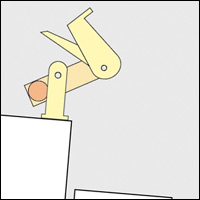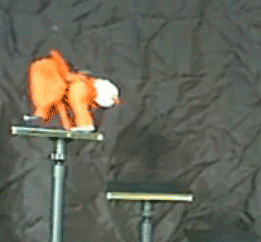 After spending a day cutting and sticking without much success I've decided to take a step back and try to work out the geometry of this classic tumbling toy.
After spending a day cutting and sticking without much success I've decided to take a step back and try to work out the geometry of this classic tumbling toy.
I've been sent various YouTube links by helpful friends of the website so I've been poring over various online videos. I screen grabbed shots of this YouTube video by Ian B Dunne and looped it to more easily see what is going on.
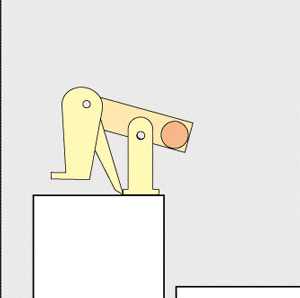 I've then taken the individual frames and dropped them into Illustrator.
I've then taken the individual frames and dropped them into Illustrator.
In essence, the tumbler has three parts. the body with the sliding weight, the arms and the legs. I traced the three parts and experimented with different stills from the YouTube video to work out where the joints should be.
I've animated the frames together and included the coin weight to show its motion. You can see it rolling back and forth with the body tube.
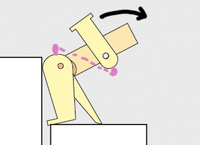
There is one point in the motion that might be a problem. When the body reaches the point shown in the still, the arms need to swing over the body to the other side ready for the hands to touch the floor. Gravity won't do the job. Inertia might but failing that I'm hoping that a strip of paper where the purple dotted line is will pull the arms over as the body drops down. Time will tell.
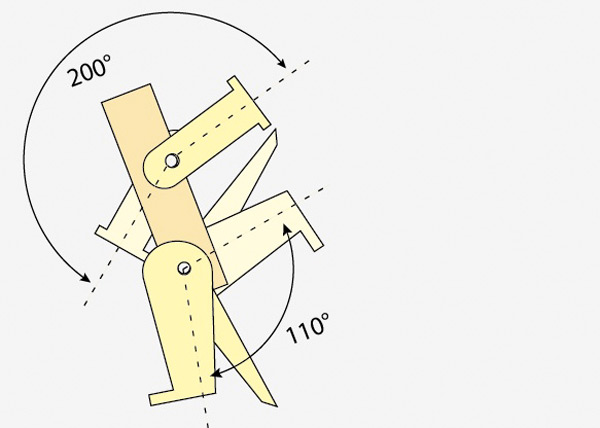
By checking the geometry of the parts in the animation I can see the range of motion that the arms and legs need. When I put the second prototype together I'll use these angles in the hopes that the model will work straight from the drawing board. Hah.
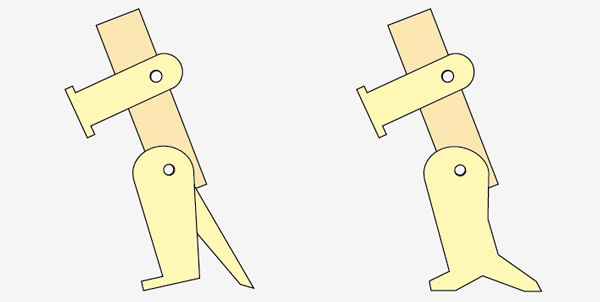
In the tumbling boy automata, who stars in a few YouTube videos, there is a strange 'tail' fixed behind the legs. Rather that using that design I'm going to be using a really big foot.
Tomorrow – back to card.

